Webflow Salesforce Integration helps businesses sync customer data effortlessly, eliminating manual data entry and reducing errors. Whether you’re a marketer, sales professional, or developer, integrating Webflow with Salesforce ensures real-time data flow, improving efficiency and decision-making.
With this automation, teams can focus on growth instead of repetitive tasks. Imagine a lead submits a form on your Webflow site. Instead of manually transferring details, the data instantly syncs with Salesforce, triggering follow-ups, segmentation, and automation.
This means no missed opportunities, faster lead conversion, and a seamless customer experience. Businesses can track customer interactions, analyze behavioral data, and tailor personalized marketing campaigns – all in one place.
Beyond lead management, this integration enhances marketing, sales, and customer service. Want to automate Webflow data in Salesforce? You can set triggers for nurturing leads, generate custom reports, and even connect third-party tools.
From small businesses to enterprises, this solution scales effortlessly to meet unique business needs.
This guide covers everything – from setup to maintenance. It explores configuring Webflow and Salesforce, addressing integration challenges, and utilizing Webflow customer data in Salesforce for maximum impact helping you make an informed decision.
Why You Need Webflow Salesforce Integration
Managing customer data across multiple platforms can be a hassle. Webflow Salesforce Integration ensures seamless data flow, automation, and smarter decision-making.

Eliminate Manual Data Entry with Webflow Customer Data in Salesforce
Manually transferring data slows you down. Webflow Salesforce Integration ensures that customer information flows ideally into Salesforce, reducing errors and saving time. Focus on strategy instead of tedious data entry.
Automate Webflow Data in Salesforce and Focus on Growth
Repetitive tasks kill productivity. By automating Webflow data in Salesforce, you can trigger workflows, assign leads, and update records instantly. Spend less time on admin work and more time scaling your business.
Leverage Real-Time Insights for Smarter Business Decisions
Delayed data means missed opportunities. Salesforce Webflow integration provides real-time insights into customer interactions. Make informed decisions based on the latest trends and user behavior.
Enhance Customer Experience and Build Brand Loyalty
Customers expect flawless experiences. Webflow integrations help track interactions, personalize communication, and resolve issues faster. Deliver a frictionless journey that keeps customers coming back.
Streamline Marketing Automation for Higher Conversions
Marketing works best when it’s data-driven. With Webflow customer data in Salesforce, you can personalize campaigns, automate follow-ups, and convert leads faster. Let data do the heavy lifting while you refine your strategy.
Step-by-Step Guide to Webflow Salesforce Integration
Absolute integration between Webflow and Salesforce ensures smooth data transfer and automation. Follow these steps to connect both platforms efficiently.

Step 1 – Set Up Webflow for Smooth Integration
Ensure your Webflow website is ready for integration. Configure forms, enable necessary fields, and verify data collection settings. This setup ensures accurate information flows into Salesforce CRM.
Top Features
- Customizable Webflow forms to capture leads and customer inquiries
- Secure data collection with encrypted submissions
- API support for advanced integrations
Step 2 – Configure Salesforce to Accept Webflow Data
Set up Salesforce CRM to receive data from Webflow integrations. Create custom objects, map fields, and enable API access. This step ensures that all customer data lands in the right place.
Top Features
- Custom field mapping for Webflow customer data in Salesforce
- API access for real-time data transfer
- Workflow rules to automate lead assignment
Step 3 – Connect Webflow Forms with Salesforce CRM
Link Webflow forms to Salesforce CRM using native integrations, middleware, or APIs. Proper mapping ensures customer data reaches the right departments automatically.
Top Features
- Native integrations via tools like Zapier or Make
- Direct API connections for real-time data sync
- Automated lead assignment and follow-ups
Step 4 – Automate Webflow Data in Salesforce Using APIs or Third-Party Tools
Use APIs or third-party tools to automate Webflow data in Salesforce. This step removes the need for manual updates, ensuring data is always up to date.
Top Features
- REST and SOAP API support for direct integrations
- No-code tools like Zapier for simple automation
- Scheduled data sync for consistency
Step 5 – Test, Troubleshoot, and Go Live
Before launching, test the integration to ensure smooth data transfer. Troubleshoot any issues and optimize workflows for peak performance.
Top Features
- Debugging tools for real-time error detection
- Sandbox environment for safe testing
- Monitoring dashboards for tracking data flow
Key Technical Considerations for Webflow Integrations
An ideal Webflow Salesforce integration requires more than just linking two platforms. Understanding key technical aspects like data mapping, accuracy, integration methods, and security can make all the difference.
Businesses must ensure their customer data flows smoothly while maintaining compliance and efficiency.

Data Mapping and Field Customization in Salesforce Webflow Integration
Data mapping ensures that customer details collected from Webflow forms are correctly transferred to Salesforce CRM. Without proper mapping, essential data might end up in the wrong fields or get lost entirely.
Customizing Salesforce fields is crucial to match specific business needs, ensuring that every lead, contact, and transaction is stored in the right format. This step helps businesses streamline processes by categorizing leads based on industry, behavior, or purchase history, making it easier to nurture prospects effectively.
Ensuring Data Accuracy and Preventing Duplicates
Data accuracy is the foundation of any Webflow Salesforce integration. Without proper validation, businesses risk dealing with incorrect, incomplete, or duplicate records, leading to inefficiencies in customer interactions.
Salesforce provides duplicate detection and data validation rules that help maintain clean records. Webflow form submissions should be monitored for inconsistencies, ensuring that leads are correctly identified and not duplicated.
Businesses should also implement automated record-merging strategies to prevent multiple entries for the same customer, keeping their CRM organized and reliable.
API vs. No-Code Solutions – Which One is Right for You?
Businesses integrating Webflow with Salesforce can choose between API-based integration or no-code automation tools. APIs offer complete control, allowing developers to create a customized and scalable connection.
This option is ideal for businesses that need advanced customization, real-time sync, and specific automation workflows. On the other hand, no-code solutions like Zapier provide a user-friendly alternative for those without technical expertise.
These tools simplify integration by offering pre-built connectors, making it easy to send form submissions directly to Salesforce without writing a single line of code. The choice depends on the complexity of the integration, the volume of data being transferred, and the level of customization required.
Security & Compliance for Webflow Customer Data in Salesforce
Handling Webflow customer data in Salesforce comes with security and compliance responsibilities. Businesses must protect sensitive information through encryption, role-based access control, and secure API connections.
Compliance with regulations like GDPR and CCPA is crucial to avoid legal risks and maintain customer trust. Salesforce provides built-in security features, ensuring that only authorized personnel can access critical data.
Webflow users integrating with Salesforce should also implement measures such as secure token authentication and periodic security audits to prevent breaches. A well-secured integration not only protects data but also enhances customer confidence in how their information is managed.
Ongoing Optimization & Best Practices

A successful Webflow Salesforce integration isn’t a one-time setup – it requires continuous monitoring and improvement. Regular optimizations help businesses maintain efficiency, prevent data bottlenecks, and ensure their automation strategies remain effective.
By refining processes and training teams, organizations can fully leverage the integration for long-term success.
Monitor and Maintain Webflow Salesforce Integration Performance
Consistent monitoring ensures that Webflow customer data in Salesforce flows correctly without errors or delays. Businesses should track form submissions, data syncing, and API performance to identify and resolve issues early.
Regular audits help detect duplicate records, incorrect mappings, or API failures that may affect workflows. Using Salesforce reports and Webflow analytics, teams can gain insights into lead conversion trends and system health, ensuring that the integration continues to deliver value.
Optimize Automations for Scalability and Efficiency
As a business grows, its Webflow Salesforce integration must scale accordingly. Automations should be fine-tuned to handle increased data volumes without slowing down operations.
Businesses can refine workflows by removing redundant steps, optimizing API calls, and leveraging Salesforce’s automation tools like Flow Builder or Process Builder. Periodic testing of automations ensures that lead routing, follow-ups, and customer interactions remain seamless as demand increases.
Train Teams to Maximize Salesforce Webflow Capabilities
A well-trained team is essential to making the most of Salesforce Webflow capabilities. Employees should understand how data moves between platforms, how to troubleshoot common issues, and how to leverage automation for better efficiency.
Regular training sessions keep staff updated on new Salesforce features, Webflow updates, and best practices. Encouraging collaboration between marketing, sales, and IT teams ensures smooth operations and faster resolution of integration-related challenges.
Wrapping Up!
Effortlessly connecting Webflow and Salesforce transforms how businesses manage leads, automate workflows, and enhance customer experiences.
With the right integration, you can eliminate manual data entry, improve efficiency, and gain real-time insights for smarter decision-making. A well-optimized setup ensures data accuracy, strengthens marketing efforts, and helps teams work more effectively.
Whether you need a no-code solution or a custom API-based integration, choosing the right approach is key. Investing in ongoing maintenance and optimization ensures long-term success.
Rolustech, a trusted Salesforce partner, specializes in Webflow Salesforce integration, helping businesses streamline processes and unlock maximum value. Get expert guidance and take your integration to the next level.




